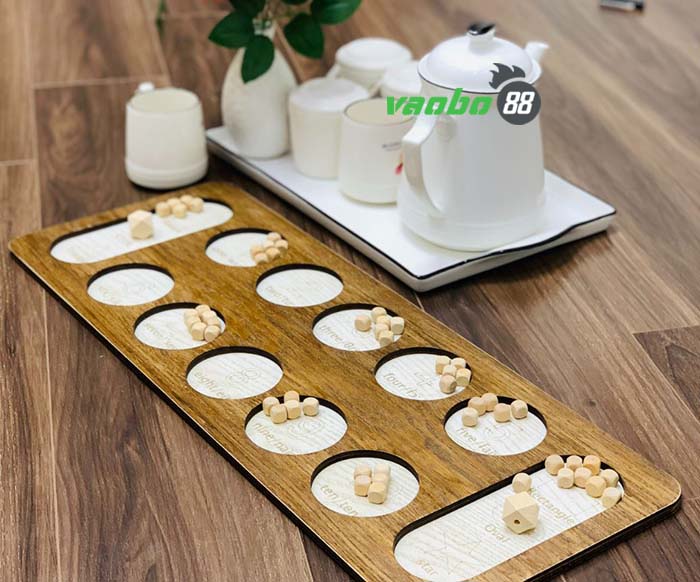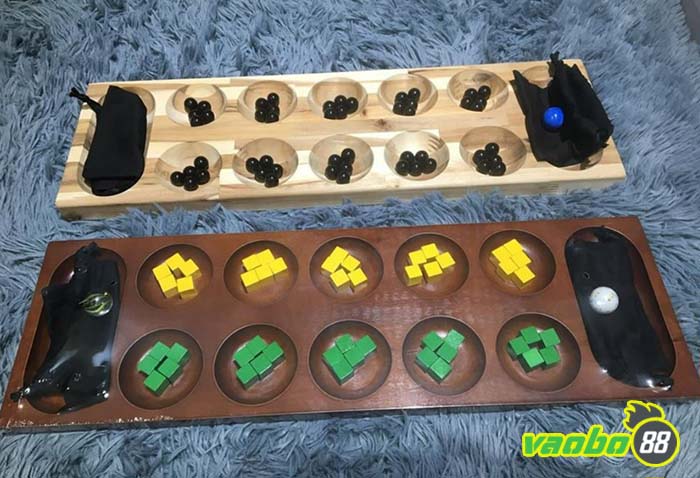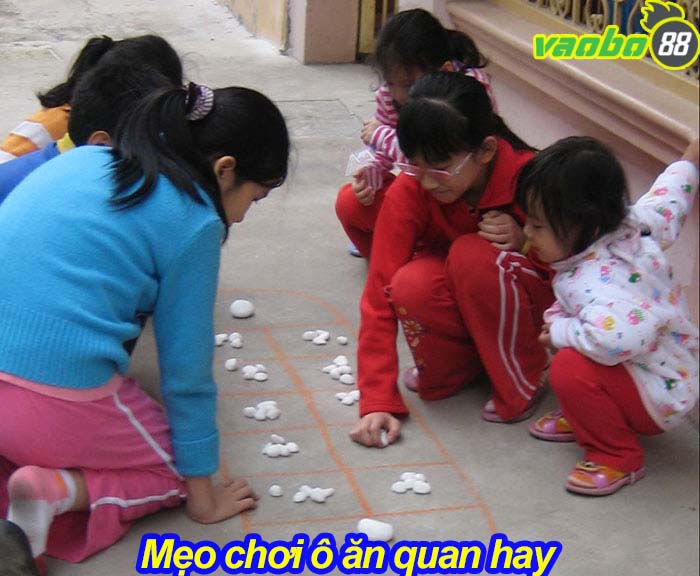How to play the game of O An Quan is of great interest to many children after tiring study hours.
This traditional game is closely associated with the memories of many generations of Vietnamese people. Especially, the rules of the game are not too difficult to understand for both adults and children.
Introduction to the game of O An Quan
The traditional game of O An Quan is a traditional entertainment activity in Vietnam. It is also commonly referred to as O Quan or An Quan. This game is rich in strategy, although it appears very simple from the outside.

In rural areas, children often gather stones and draw O An Quan to play this game. Typically, the O An Quan game involves 2 participants, however, a variation with 3 players can also be used.
It is very difficult to answer when the game of O An Quan first appeared. Historical books only record that it has been present and popular in our country for a long time. Many people believe that this game was inspired by battles against foreign invaders in the endless fields.
How to play the game of O An Quan is based on the military marches and troop divisions of our ancestors. Nowadays, children are exposed to technology from an early age, so O An Quan is gradually losing its position. It mainly appears in remote and distant rural areas.
Tools for playing the game of O An Quan
The items used to play O Quan can be collected from anywhere in nature. However, to ensure cleanliness, you should prepare clean tools.
1/ Playing board for O An Quan
The playing board for O An Quan can be drawn on any flat surface, as long as it does not get moved during play.

Typically, children will play on the ground, floor, table, or a piece of paper with a pre-drawn board. How to draw O An Quan is simple with a few straight and curved lines.
According to the rules of the game O An Quan, the playing board does not have to follow any specific dimensions. Sometimes, a few scribbles are enough to create an interesting play area.
For a basic playing board for 2 people, you need to draw a rectangle and divide it into 10 equal squares (civilian squares). At both ends are 2 larger semicircular squares (Quan squares).
2/ Playing pieces for O An Quan
There are two types of pieces in O An Quan: civilian pieces and Quan pieces. These pieces can be stones, pebbles, or any other small items, but it is best not to choose overly round objects as they may roll easily during play.
Like the size of the playing board, the pieces can be chosen at your discretion. Of course, they must be suitable for the board and fit comfortably in the players’ hands. In some places, they use 2 Quan pieces that are significantly larger than the civilian pieces, while in other places, they replace them with 10 regular civilian pieces.
In addition, there will be 50 civilian pieces evenly distributed across 10 squares. 2 types of pieces in the “ô ăn quan” game are the basis for scoring to determine which side ultimately wins.
3/ Number of players
As mentioned above, the most common number of players at the “ô ăn quan” table is 2. Some variations of the game also accept 3 or even 4 players.
 Number of players
Number of playersHowever, the 2-player version is still the most preferred because players can easily manage and calculate. Players will sit and manage their own pieces, while the 2 “quan” squares are not under anyone’s control.
Basic rules of the “ô ăn quan” game
The rules of “ô ăn quan” include how to move, how to capture pieces, and how to calculate winning points. Given that this game is designed for children, it has no complex rules.
1/ Starting to distribute pieces
After arranging the pieces, the players can start the game immediately. The guidelines for playing “ô ăn quan” state that the first player is determined by agreement or by rock-paper-scissors.

Then, the first player takes 5 pieces from any square they manage and distributes them one by one into the next squares. You can move in any direction, and each square can only receive 1 piece.
When all pieces are distributed, the following situations may occur:
- If the next square is a civilian square, take all pieces from there and continue distributing. If it is a “quan” square, you can only take 1 piece from it to distribute to the next square.
- If the next square has no pieces (including both civilian and “quan” squares) but the following square has pieces, you can capture all pieces there. The captured pieces will be taken back by the player to count points after the game ends.
- In some places, the rules of the “ô ăn quan” game do not allow capturing “quan” squares with fewer than 5 pieces to avoid the game ending too quickly. In this case, the player will lose their turn.
- If the sequence of empty squares followed by a square with pieces repeats in the next squares, the player can capture all subsequent squares. Therefore, in a suitable turn, you can collect all pieces on the table.
- If a player runs out of pieces to distribute but the next square is an empty “quan” or there are 2 consecutive empty squares, they lose their turn.
Above is the brief rules of “ô ăn quan” that I can summarize for you. Just mastering the piece distribution part is enough to participate in this game.
2/ Rules of “ô ăn quan”: Consecutive turns
Participants in the “ô ăn quan” game will take turns playing. While your opponent is distributing pieces, you can calculate how to play in your next turn according to the guidelines for playing “ô ăn quan”.
If it is your turn and all 5 civilian squares are empty, you must place one piece in each of those squares. You can then choose any square to take pieces from to distribute.
3/ Rules of “ô ăn quan”: Ending the game and calculating wins and losses
The game will end when both of the royal pieces are captured. When it ends, the pieces in the civilian area of the player will be collected by that player. This situation is called “no more royals, all civilians collected.” After that, the players proceed to count points to determine who the winner is.
As mentioned above, civilian pieces are worth 1 point, while royal pieces are worth 10 points. The player with the highest score will be the winner of the game. You need to learn and practice for a long time to master the skill of playing the game of capturing royals well, making it easier to defeat your opponents.
The best tips for playing the game of capturing royals
In addition to the way of playing the game of capturing royals, tricks are also an important factor in winning this game. Of course, with such a simple game, the number of tricks cannot be many.
 Tips for playing the game of capturing royals well
Tips for playing the game of capturing royals wellThe most important thing is to be quick in calculations; you can count the pieces and calculate your moves to capture as many as possible.
Usually, opponents will not let you sit and calculate for too long. So sometimes we have to close our eyes and scatter pieces randomly and wait for luck to smile upon us. Accumulate as much practical experience as possible, and the way to gain experience is through practical play.
Conclusion
The way to play the game of capturing royals is so simple that even children can grasp it in the palm of their hand. However, adults can still participate in this game for entertainment or to play with their children.








